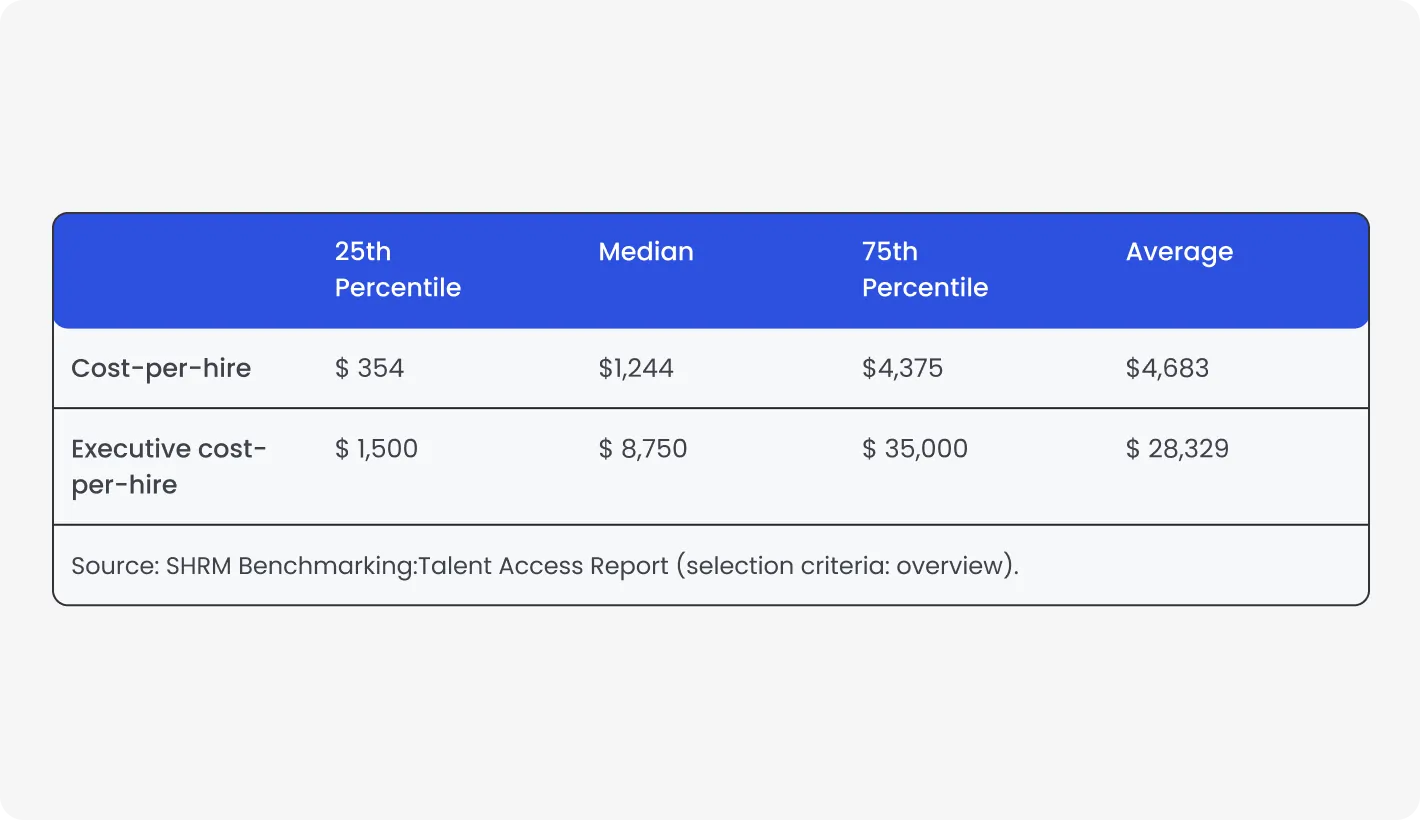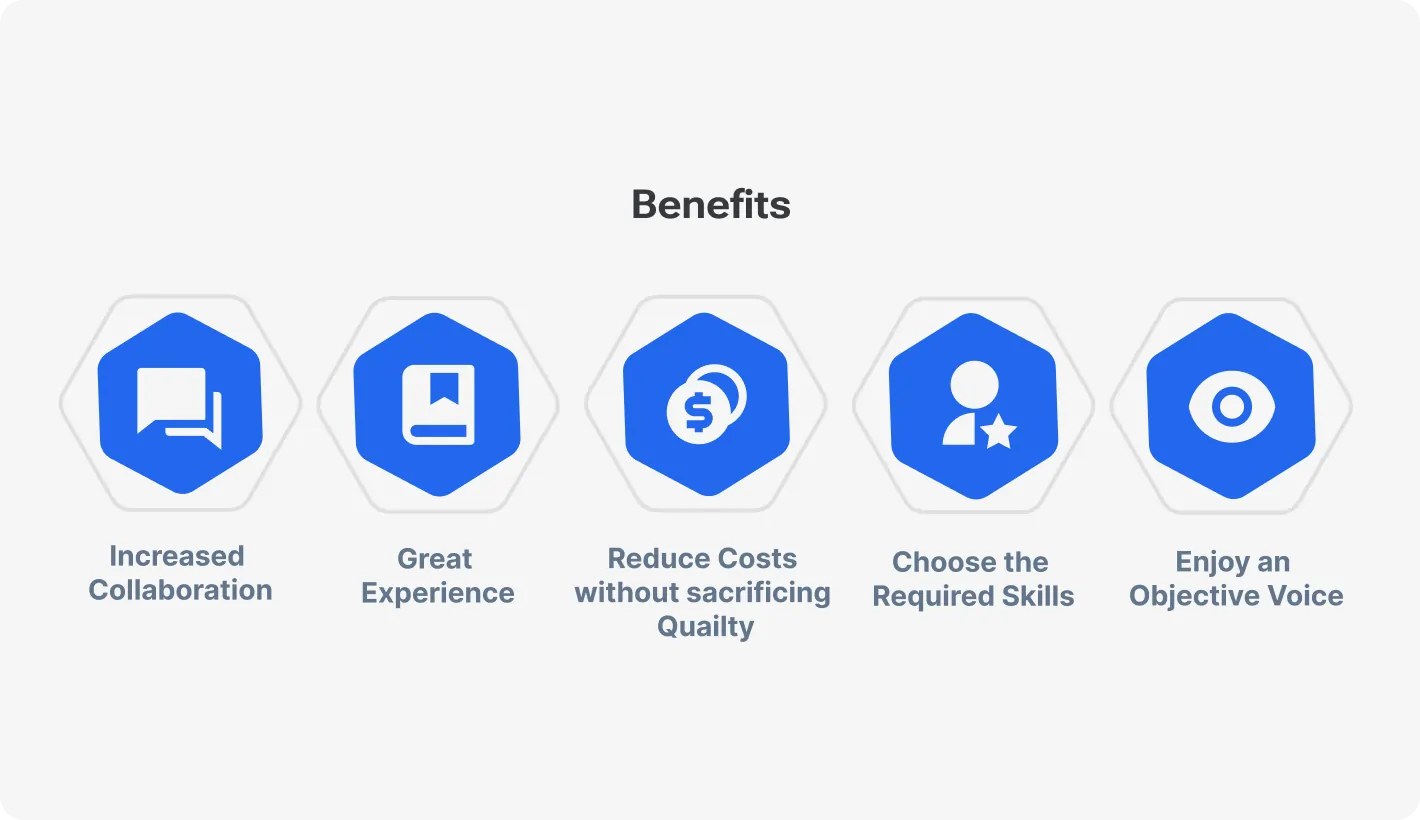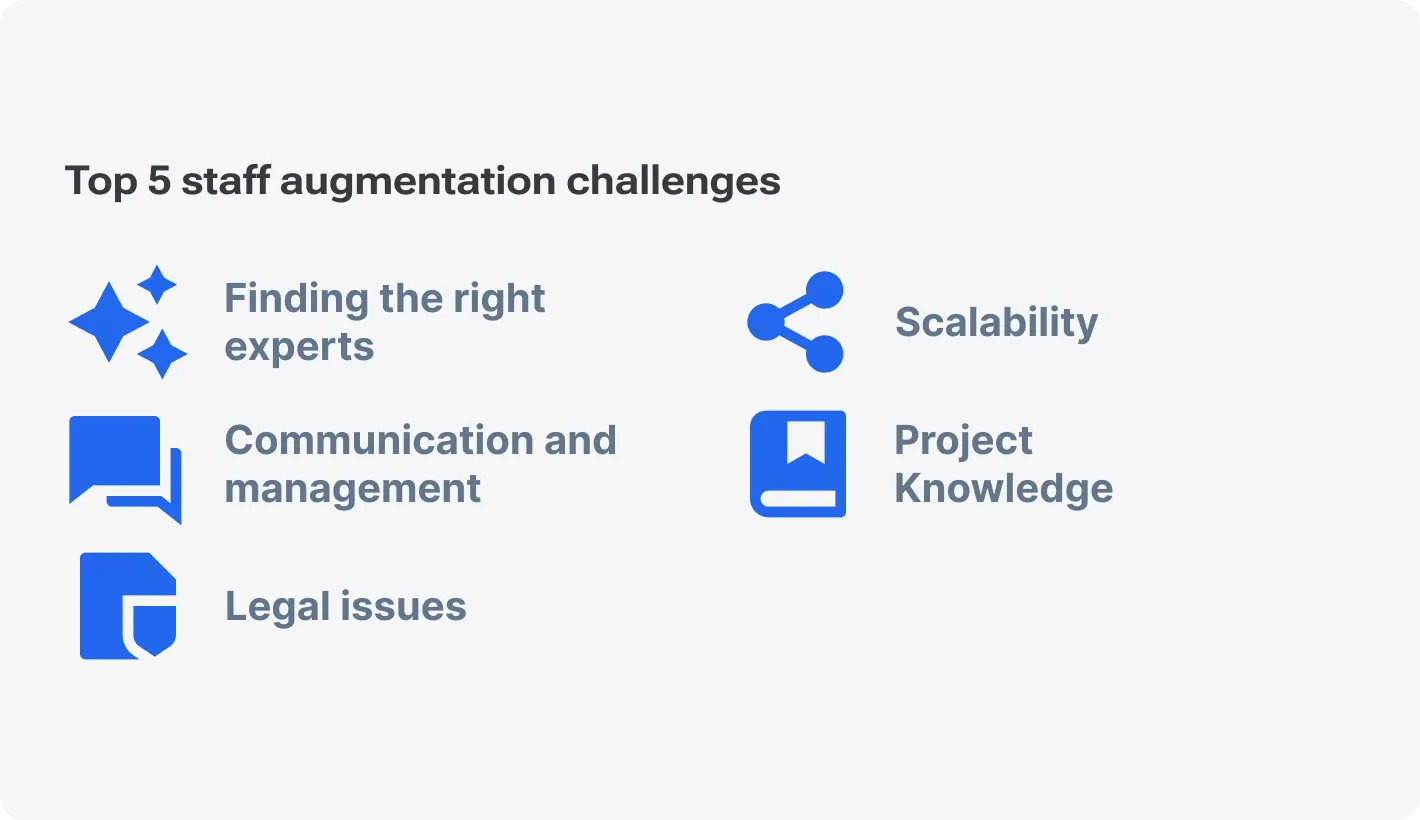Outsourcing to Czechia

How much does it cost to hire developers in Czechia?
Dec 2nd 25 - by Devico Team
Find out how much it costs to hire software developers in Czechia in 2025. Compare hourly rates, roles, and factors that impact pricing.
Hire
Hire by role
Hire Front-end developers
Hire Back-end developers
Hire Full-stack developers
Hire Android developers
Hire iOS developers
Hire Mobile developers
Hire AI engineers
Hire ML engineers
Hire Automation QA engineers
Hire Blockchain developers
Hire Data engineers
Hire Cloud engineers
Hire by skill
Hire JavaScript developers
Hire TypeScript developers
Hire Ruby on Rails developers
Hire React Native developers
Hire Flutter developers
Hire Golang developers
Hire React.js developers
Hire Python developers
Hire PHP developers
Hire .NET developers
Hire Java developers
Hire Laravel developers

Staff augmentation
May 30, 2024 - by Devico Team
Summarize with:
Staff augmentation is a tool to significantly reduce costs and accelerate time-to-market. Businesses of all sizes suffered from the pandemic, but at the same time, they all experienced a significant boost from COVID-19, and team augmentation is not an exception. As of 2021, many companies leveraged the resource augmentation model for the first time to.
Staff augmentation still stands out as a pivotal strategy for businesses aiming to stay ahead. A striking statistic of staff augmentation shows that traditional hiring processes take approximately 58 days and cost around USD 4,700 per hire.

The staff augmentation business model substantially curtails the time to fill talent gaps and mitigates upfront recruitment expenditures. But real value comes from knowing how to integrate a staff augmentation model effectively. Even modern and flexible companies grapple with the challenge of integrating augmented developers with their existing teams. The integration process, while complex, is crucial for harnessing the full potential of augmented teams. That’s why this article popped up in our minds, and now we’d like to help you navigate this challenge.
Well-integrated staff augmentation models are like new transfers to your soccer team. There are many advantages for your in-house development team as well. You just get a more robust and successful development environment.

Seamless scalability and adaptability
If you are looking for flexible scaling of your development team up or down based on project requirements, you really could do with the staff augmentation pricing model. This approach is especially helpful if you have a seasonal business: tourism, hospitality, etc. During periods of peak workload, you can bring in additional resources. Conversely, you can adjust staffing levels during slower periods, avoiding the burden of permanent hires.
Korn Ferry's report predicts a staggering global talent shortage of over 85M workers by 2030. The main resolution is simple — highly skilled professionals across various IT domains are few and far between now. And the situation may seem even worse in the near future. At the same time, team extension provides access to a wider talent pool, allowing you to integrate specialists with precisely the skills needed to complement your in-house team's capabilities. This is not to mention an opportunity to hand over special knowledge from the augmented team to yours.
How to address IT skill gaps through staff augmentation
Everything money-saving comes across as a good point. The augmentation approach, compared to traditional hiring, eliminates recruitment fees, onboarding expenses, and the ongoing costs associated with full-time staff. You only pay for the specific skills and time required for a particular project. Saved money is an additional pool for reinvestment or growth initiatives.
You can significantly reduce project completion times. Specialized knowledge and experience allow your development team to move forward efficiently, which translates to faster delivery and a competitive edge in the marketplace.
A well-integrated dev team fosters a dynamic environment where knowledge sharing and collaboration flourish, especially when it comes to integrating staff augmentation teams effectively. As we said before, augmented staff can introduce new perspectives and methodologies to in-house teams. This cross-pollination of ideas sparks innovation and leads to the development of more efficient and effective solutions.
There is no need to reiterate that staff augmentation projects require careful planning and a thoughtful approach. This is clear.
Another thing is why companies often skip the important strategic and preparatory part of how to integrate a staff augmentation model successfully. Because, again, they lack expertise and relevant experience; because this is difficult. This is one of the reasons. That’s why it’s quite easier to collaborate with external experts who provide turnkey augmentation services, including clarifying the scope of work and highlighting strategic opportunities.
But here are some steps you can start with.
Identifying core vs. specialized project needs: Begin by delineating the project's core requirements that your in-house team can address against specialized needs that necessitate external expertise. This distinction helps in precisely targeting areas for augmentation. On the other hand, this also will make it easier for the augmented staff to bring unique value without redundancy.
Utilizing tools for effective requirement analysis: Adopt project management tools such as Jira or Trello. Very basic for most companies but still significant. These tools can facilitate a detailed breakdown of project tasks and required skills. Make sure to Google expertise mapping tools. Like SkillMap or Toggl Hire — they can visually represent your team's knowledge and experience across various technologies and domains.
In addition, you can follow simple tips in determining focus areas:
Analyze project complexity: Focus on project areas that involve complex technologies or specialized skills not readily available within your in-house team. Integrating augmented developers for these tasks allows your core developers to concentrate on their strengths while ensuring the project stays on track.
Identify time-sensitive deliverables: For project phases with tight deadlines, consider staff augmentation to expedite development and meet critical milestones. This can be particularly valuable during periods of peak workload or when encountering unexpected technical hurdles.
Focus on knowledge transfer: Prioritize areas where staff augmentation can not only address skill gaps but also facilitate knowledge transfer to your in-house team. This ensures long-term benefits beyond the specific project by upskilling your internal resources.
Strategic planning for integration: Consider also adopting Agile methodologies for flexibility and incorporating regular touchpoints to support the seamless integration of augmented teams. Slack, MS Teams, etc. — choose the comms channel to your liking and go beyond: maintain alignment and foster a collaborative environment.
Looking for software development team augmentation can be tricky and pretty challenging since you just can’t be sure about the quality of their work before you actually collaborate with them. Still, such a decision can be well-informed by a thorough evaluation of potential partners and their culture. Let's delve deeper into specific criteria to ensure a strong and collaborative partnership.
Industry expertise: Look for a partner with a proven track record in your specific industry. They should possess a deep understanding of the technological landscape relevant to your development projects.
Skillset matching: Ensure the partner has access to a talent pool with the exact skillsets your project demands. Utilize clear communication to outline your specific needs and assess the partner's ability to provide qualified resources.
Cultural compatibility: Aligning company cultures is crucial for seamless collaboration. Evaluate the partner's communication style, work ethic, and overall approach to ensure compatibility with your in-house team.
Reputation is worth a separate word. Your staff augmentation partner should have successful projects and testimonials from previous clients. Assess their track record by reviewing these testimonials, ratings on trusted platforms (Clutch, Glassdoor, etc.), and any industry awards or recognitions they've received. Collaborations with well-known brands and positive feedback are indicators of a reputable partner.
How to choose a reliable staff augmentation partner
The quality of a partner's talent pool can play a pivotal role. If it’s possible, ask for their talent acquisition process, the expertise levels of their IT specialists, and employee retention strategies. These actions speak louder than words. A partner with a rigorous hiring process and a supportive work environment suggests a stable and skilled talent pool, which makes integrating staff augmentation teams into projects far smoother.
Open and transparent communication is the cornerstone of any successful partnership. Forbes once [published a study](https://www.forbes.com/councils/forbescommunicationscouncil/2021/08/09/talking-fixes-everything-how-communication-can-save-a-failing-project/ about communication. And there were plenty of interesting points. One of the most significant is that project failures can be explained by communication issues in almost 30% of cases.
Clear communication channels and collaborative work models are essential foundations for the seamless integration of augmented teams, and they must be in your signing meeting agenda. Look for providers who actively engage in discussions to understand your project objectives and ensure a tailored approach to the staff augmentation project.
Integrating augmented staff with your in-house development team doesn’t need to be strict since your business has its unique characteristics and environment. So, all further information is rather nice-to-have than a must. Still, think over it, it’s important.

Make everything coherent: Cooperation begins before onboarding. Before you onboard new people you should already know which roles they will run. The same story with the expectations for both your in-house team and the augmented staff. Create a separate space with outlined individual tasks, communication protocols, and reporting structures. Something like an internal Wiki. This way, you’ll minimize confusion and create a sense of ownership.
Set goal for both teams: In our case, the rule of thumb is to set up collaborative workshops or meetings where both internal and augmented team members can get to the same page in defining project goals and key stages. This will bring about a shared purpose and ensure everyone is aligned on priorities.
Effective onboarding for augmented developers: The most dangerous thing is the disrespectful treatment of the augmented team by your in-house team. You know, that feuding feeling when someone wants to show that they're worth something too and they don't need help. It's all about culture. Create a welcoming environment for the augmented staff. A buddy system is one of the best practices for augmented developers onboarding, helping new arrivals navigate their new working environment more comfortably. A buddy system can help new arrivals navigate their new working environment more comfortably.
Exchange knowledge: When you manage to tune your tone with the augmented staff, it’s a perfect time to ask for knowledge transfer sessions that strengthen integrating staff augmentation teams with your in-house experts. Your in-house developers can share their expertise with the augmented staff and vice versa.
Make security a priority: This step is unavoidable at the forefront throughout the integration process. In this case, rigorous protocols for data access, sharing, and storage are your best aiders.
Compliance considerations: It’s better to double-check all staff augmentation agreements on compliance and industry standards now than fix problems later. Don’t rock the boat and nip it in the bud.
Speaking from experience, there are a lot of bumps in the road when it comes to software staff augmentation. Here are some common mistakes to avoid and practical advice for CEOs of SMEs.
Measuring the success of your software development team augmentation endeavor goes beyond deadlines — it’s about understanding how to integrate a staff augmentation model into long-term workflows. To maximize the value of the augmented resources, and achieve long-term benefits for your development team is vital to exchange feedback, read between the lines, and sum up your experience with a particular provider.
You should have clear indicators within every project. If you are in the dark about the KPIs establishment process, we’ve created a comprehensive text on it. In a nutshell, here are some crucial KPIs:
Project Completion: Count projects that were completed on time and within budget. Thor rate will be expressed in percentages. Perfect indicator of augmented team contribution.
Development Team Productivity: Development velocity and the number of features completed per sprint — these pointers can clearly show the augmented staff is seamlessly integrated and contributes to overall team output.
Communication Satisfaction: Regularly survey all involved teams to gather feedback on communication and collaboration. A positive working environment is vital.
Knowledge Transfer: In our case, this can be the number of internal knowledge-sharing sessions or the frequency of technical consultations between in-house and augmented staff.
Use feedback and KPIs to identify areas for improvement and adjust your staff augmentation strategy. Probably (yet not mandatory), you’ll dive into:
Rewriting communication rules.
Providing additional training for the augmented staff.
Inventing new roles or adjusting existing ones.
Anyway, continuous monitoring, evaluating, and adapting your staff augmentation approach ensure a successful and long-lasting integration. Hence, you have more chances to succeed.
There is no profitable activity without risks. So too do staff augmentation projects carry certain risks. The following are not exhaustive, but they are the main ones. Together with strategies for overcoming them.
Even in football players are talking to each other during a game. In software development,especially when integrating augmented developers, it is very important to encourage open conversations or even small talks. So don’t shy away from open conversations or even small talks. But make sure to attract teams with relevant backgrounds. These can be expressed in language differences, unfamiliar technical jargon, or even varied communication styles.
Strategies:
Set up single channels: project management tools with messaging features and video conferencing platforms.
Encourage open communication and active listening within the team.
Remember the importance of regular and polite feedback.
Continuing the previous point, it’s quite logical that cultural differences can impact communication styles and even team dynamics.
Strategies:
Educate your in-house team on cultural differences.
Strive for an inclusive environment that celebrates diversity and respects different working styles.
Pay attention to cultural sensitivities, don’t cross that line in the sand, and promote open communication. Told is always better than hidden.
Integrating new team members, even temporarily, can disrupt existing team dynamics. And this is where potential conflicts may arise. To avoid downtimes or poor-quality output, make sure you facilitate working friendship and a fruitful atmosphere that supports integrating staff augmentation teams successfully.
Strategies:
Team-building activities. Pizza can solve many problems. To be more serious, a collaborative environment and cross-team support make a difference. And they are often created during such activities.
You could do with clear expectations and roles for all team members, including the augmented staff.
Also, nice to have a conflict resolution process. It’s better to have it on the off chance than don’t have it at all. In case of an emergency, you’ll know what to do.
It's vital to ensure the software development team augmentation aligns with your company's core values and overall business goals.
Strategies:
When looking for a software development augmentation team, prioritize those potential partners who openly discuss their values. This way, you’’ be able to check if your core values match with theirs.
Craft a handbook or any other document with a clear explanation of your vision, mission, and core values. Will be much easier to align.
Regularly assess the alignment between the augmented team's contributions and your overall business objectives to ensure seamless integration of augmented teams.
Not a showing off, but rather the first stage of how you can examine Devico. Below are just two of our cases. You can find more by the link.
Client: Mode, a publicly listed UK-based crypto company.
Team: 10 devs
The main benefit: Faster time-to-market, access to Devico’s expertise, and a scalable development team that adapted to client’s needs.
Project details:
Mode App: without any pathos, it’s a robust financial app allowing users to buy, sell, grow, and manage crypto assets alongside traditional currencies.
Challenge: Develop a secure and scalable backend system for the mobile app (Android & iOS) and a separate admin portal for customer data management and transaction monitoring. The system needed to handle a high volume of transactions, ensure robust security for user assets, and support multiple cryptocurrencies.
How we helped:
Devico developed the backend system for the Mode app, ensuring high availability and scalability to handle a large number of transactions per second.
Security was a top priority. Devico implemented user registration and verification processes that adhered to the highest security standards while maintaining a user-friendly experience.
The backend system was designed with the flexibility to support various cryptocurrencies and diverse functionalities like deposits, withdrawals, peer-to-peer transactions, and a referral program with reward tracking.
Client: Returnmates, a US-based provider of return shipping services.
Team: 7 devs
The main benefit: Flexibility and adaptability of Devico’s team: the client’s needs were rapidly evolving which, however, didn’t keep us from high-quality delivery.
Project Details:
Returnmates platform: A web-based solution for streamlining online return processes.
Challenge: Develop a user-friendly platform that simplifies online returns for both consumers and businesses. Key functionalities included: handling multiple returns to the same address, label printing, automated data collection, order creation, secure data sharing with partners, partner page customization, and return status tracking.
How we helped:
Devico provided a comprehensive solution including UI/UX design and software development for the Returnmates platform.
The UI/UX design focused on creating intuitive interfaces for customers, partners, and the Returnmates team, ensuring a smooth user experience across all sides.
Devico developers utilized modern technologies to build a robust and scalable platform with functionalities such as:
Consolidation of multiple returns to the same address.
Integration with Zebra printer API for label printing from the admin panel.
Barcode scanning for automated package data collection.
Automated order creation to minimize errors and save time.
Secure data transfer via SFTP server for sharing return information with partners.
Customizable partner pages to meet the specific needs of each retailer or marketplace.
Integration with Onfleet for advanced return shipment tracking.
You can unlock the full potential of the staff augmentation model and harness its power to achieve your business goals. Let’s run through key takeaways.
A well-defined plan that considers project needs, skillset matching, and cultural compatibility is crucial for a successful staff augmentation integration.
Be as open and transparent as possible. Communication throughout the entire process fosters collaboration, ensures alignment, and minimizes potential misunderstandings.
Onboard augmented dev team firmly and ensure a clear step-by-step integration process. Here, clear communication channels could make a difference.
Remember to regularly evaluate the effectiveness of your staff augmentation approach, address challenges promptly, and adapt to optimize performance and maximize value.
Software team augmentation, when implemented strategically, offers a powerful solution for overcoming talent shortages. But its impact depends on how to integrate a staff augmentation model into existing workflows.
Outsourcing to Czechia

Dec 2nd 25 - by Devico Team
Find out how much it costs to hire software developers in Czechia in 2025. Compare hourly rates, roles, and factors that impact pricing.
Outsourcing to Czechia

Nov 25th 25 - by Devico Team
Compare Czechia and Poland for software outsourcing in 2025. Discover costs, talent, infrastructure, and which country fits your project best.
Outsourcing to Czechia

Nov 18th 25 - by Devico Team
A complete guide to outsourcing software projects to Czechia, learn about costs, talent, benefits, and how to build successful partnerships in 2025.